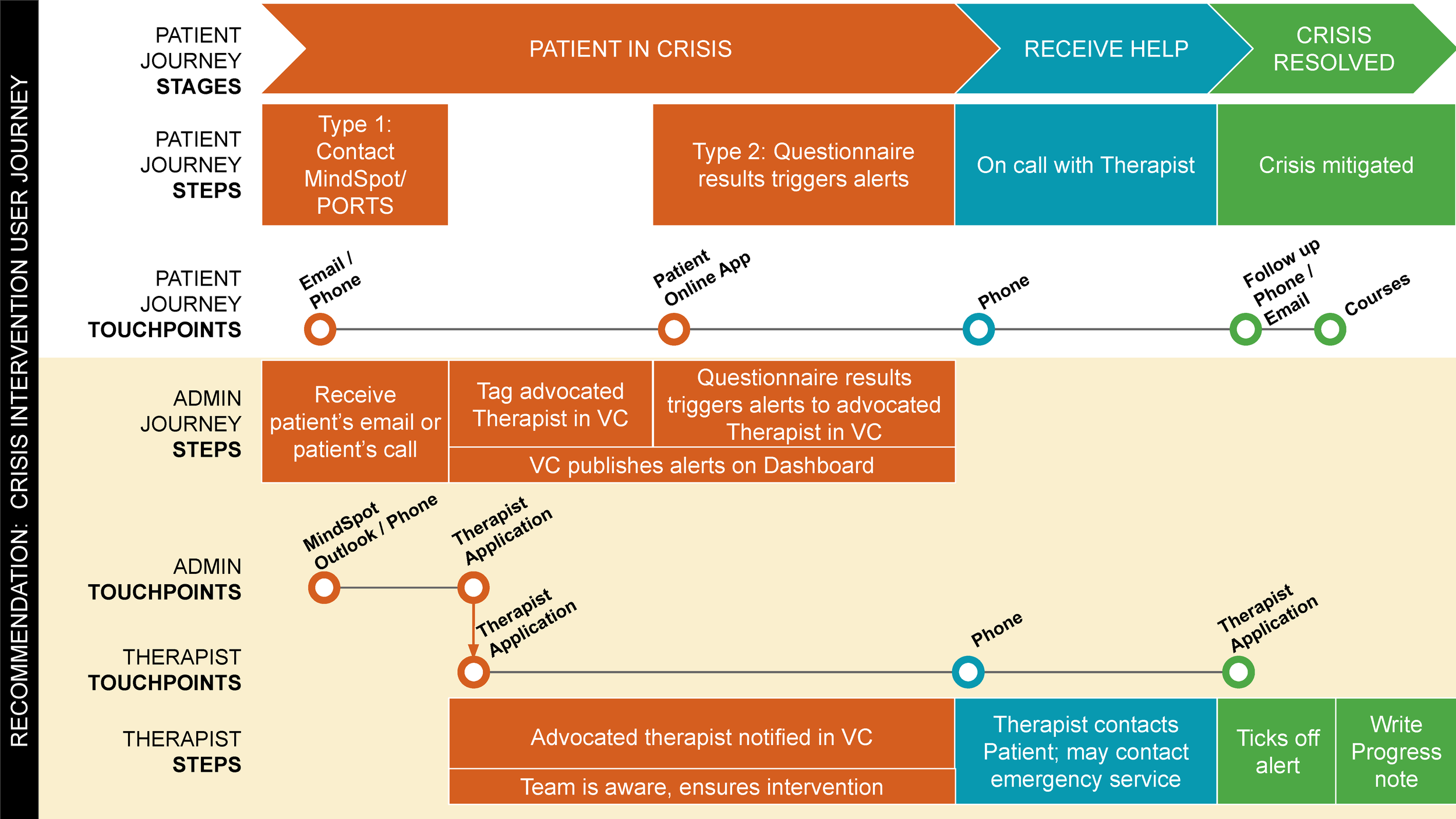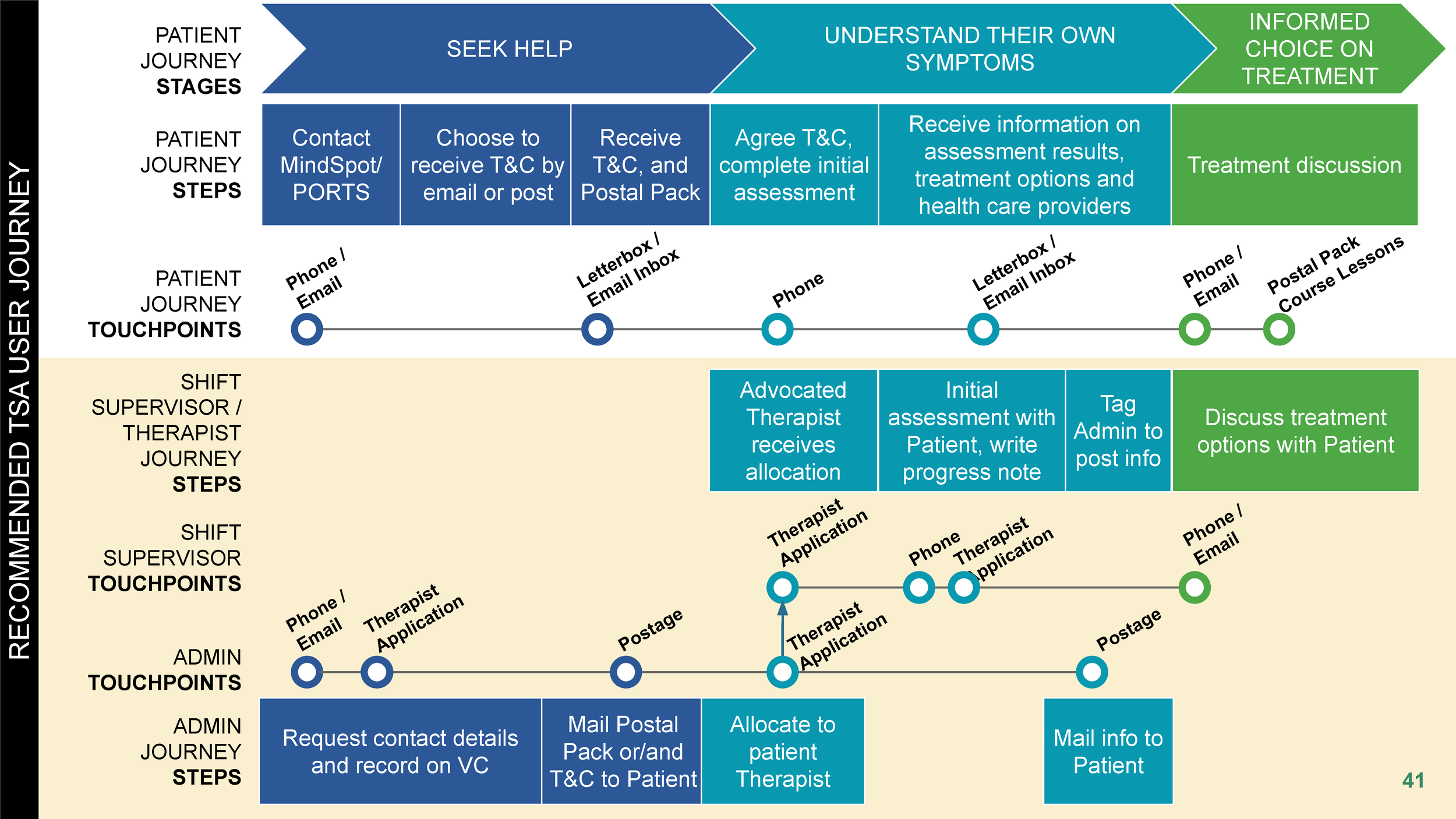MindSpot Clinician Platform
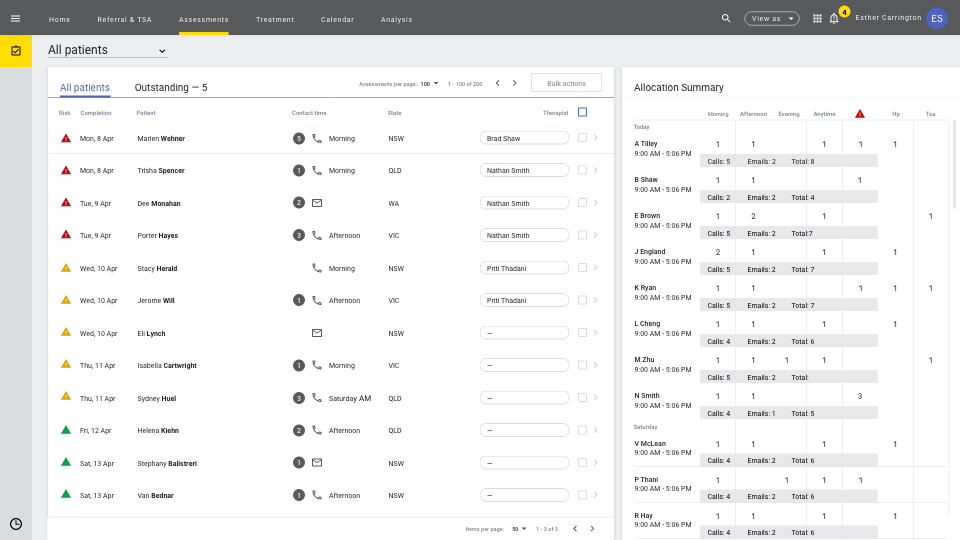
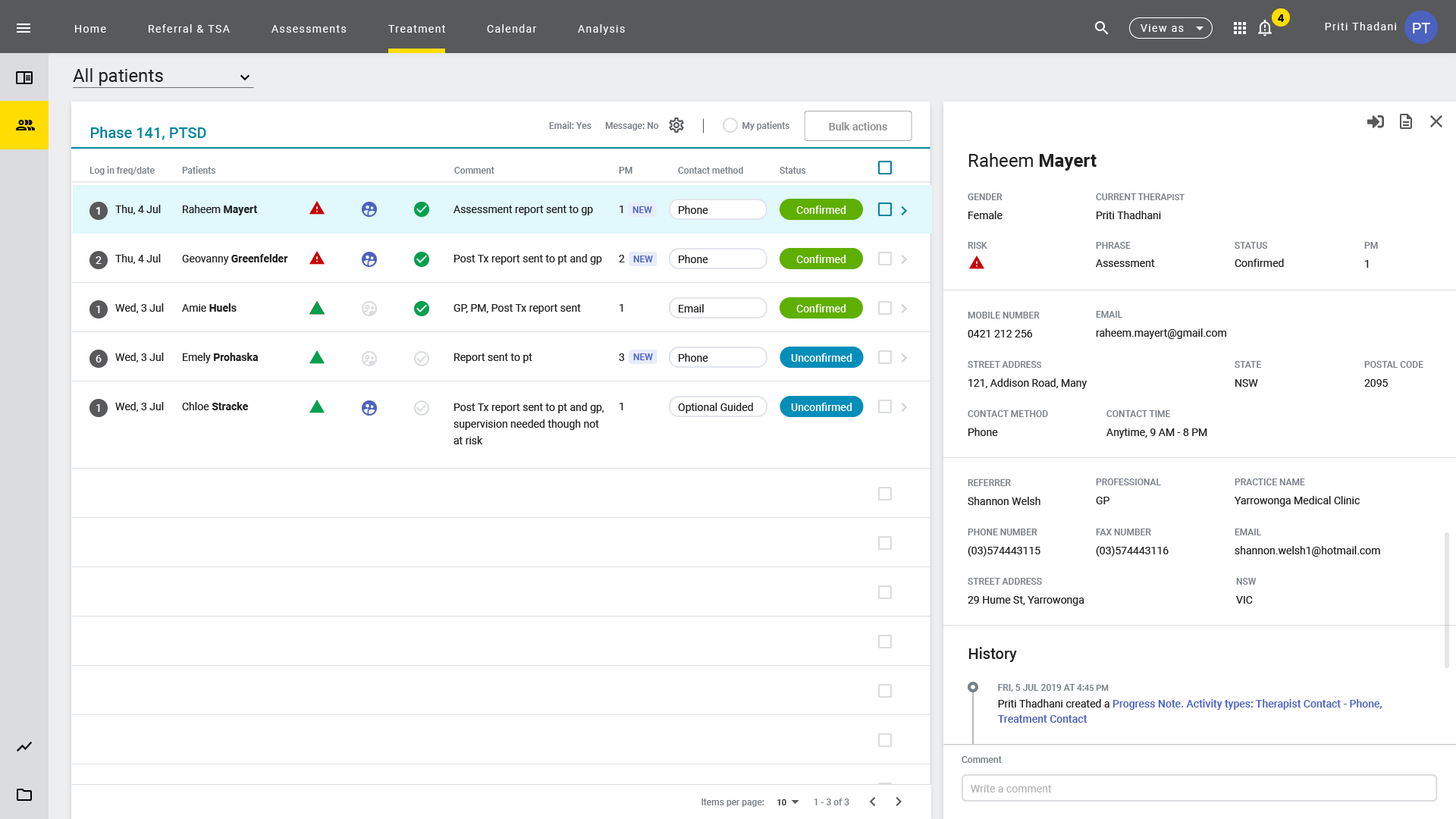
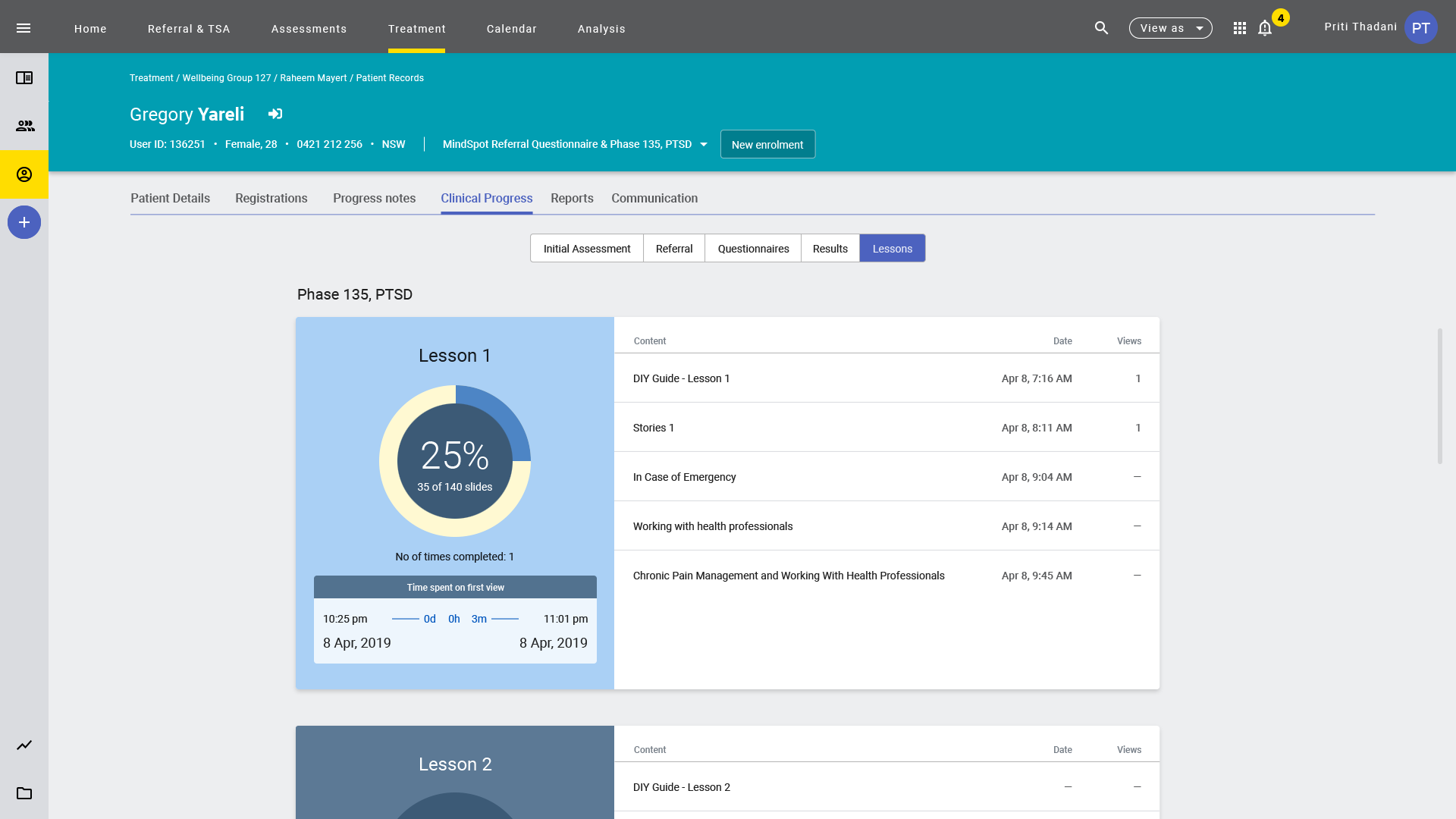
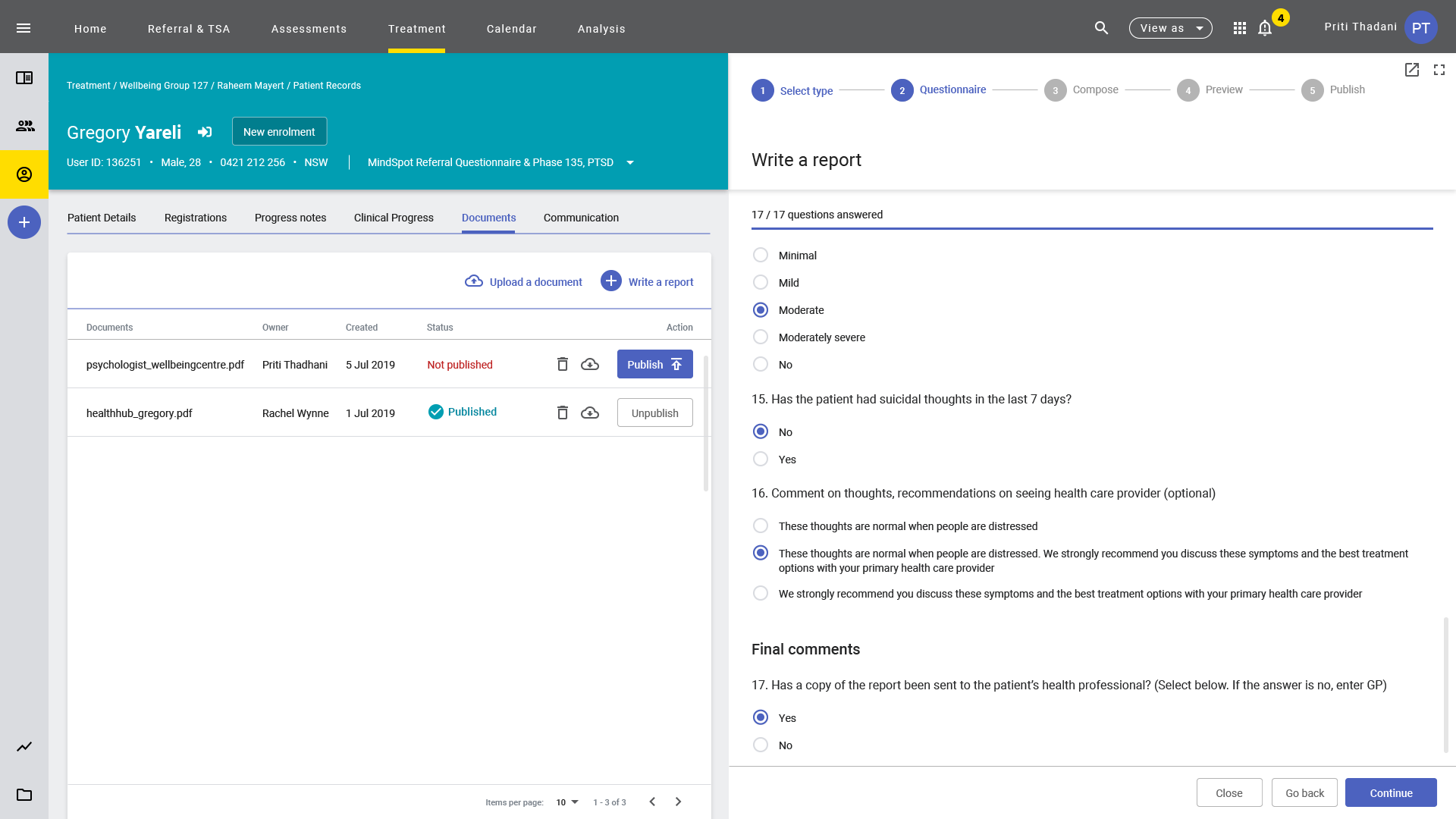
Context
MindSpot provides a patient self-assessment platform, with follow-up treatment offered for Australians who needed mental health support.
The patient platform provides assessments and courses that Australians can take with the help of a psychotherapist. The self-assessments categorised conditions as critical, severe, or mild.
In conjunction with this platform, Mental Health Therapists and Administrators used a patient management application that enabled patient coordination and communication, collaboration and knowledge sharing amongst themselves.
Scope
UX Plan
UX Research & Synthesis
User Interface
Usability Tests
Defining MindSpot’s business and user needs
To overhaul the cumbersome patient management application to improve the overall process
Empower administrators and therapists to work and collaborate efficiently, ultimately reducing occupational stress.
Enable the team to attend to patients more effectively by organising them based on urgency.
To increase the number of patients each therapist could treat
To market this system to other health institutions or corporate organisations.
What we did
As a cohesive team, we revitalised the outdated patient management application. We began with comprehensive user research, transforming data into actionable insights.
These insights effectively informed on the information architecture designs. From low-fidelity sketches to user interface detailing, we collaborated with our clients to iteratively improve the user experience.
We worked closely with MindSpot’s Product Owner to align the vision and maintained seamless communication with the DevOps team.
Our dedicated efforts resulted in a modern, user-friendly solution, showcasing the power of thorough research, effective design, and strong teamwork.
End-to-end design process
Requirements and constraints gathering'
Stakeholder interview
In-depth interviews
Contextual observation
Persona building
Task analysis
Journey mapping
Prototype feedback and testing
User stories
Information architecture
Design System
Usability tests
Scroll further to view artefacts.
Understanding and helping various users
Mindspot’s users include:
Therapists
Office Manager
Administrators
Shift Supervisors
From the user research, we identified the following issues resulted in inefficient workflows and work-around for the users.:
Complexity in the existing application’s information architecture
Inconsistency of the navigation
Hidden options,
Clumsy UI mechanics
Confusion and pain points that comes with the adoption of multiple disparate systems in order to complete tasks
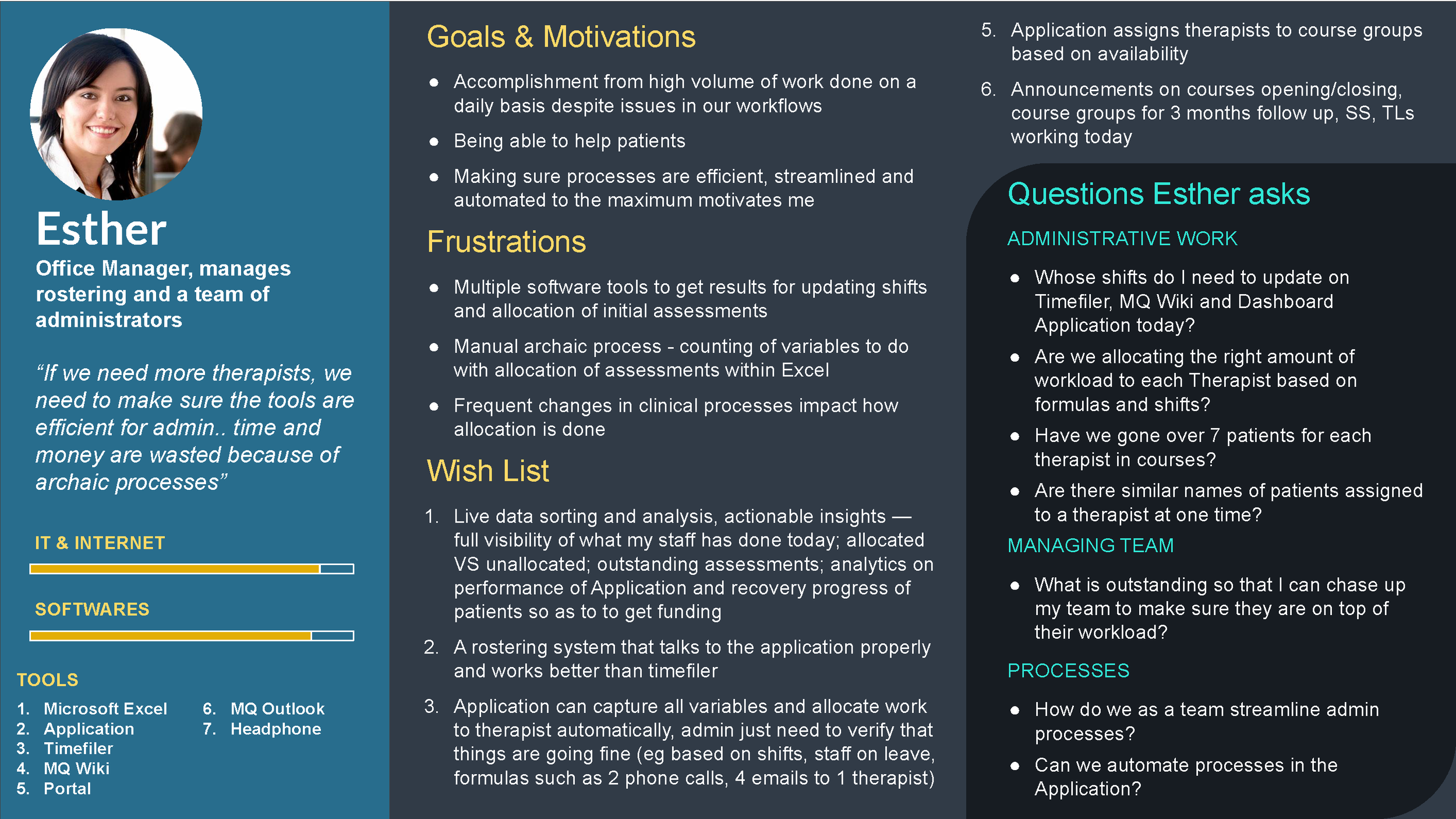
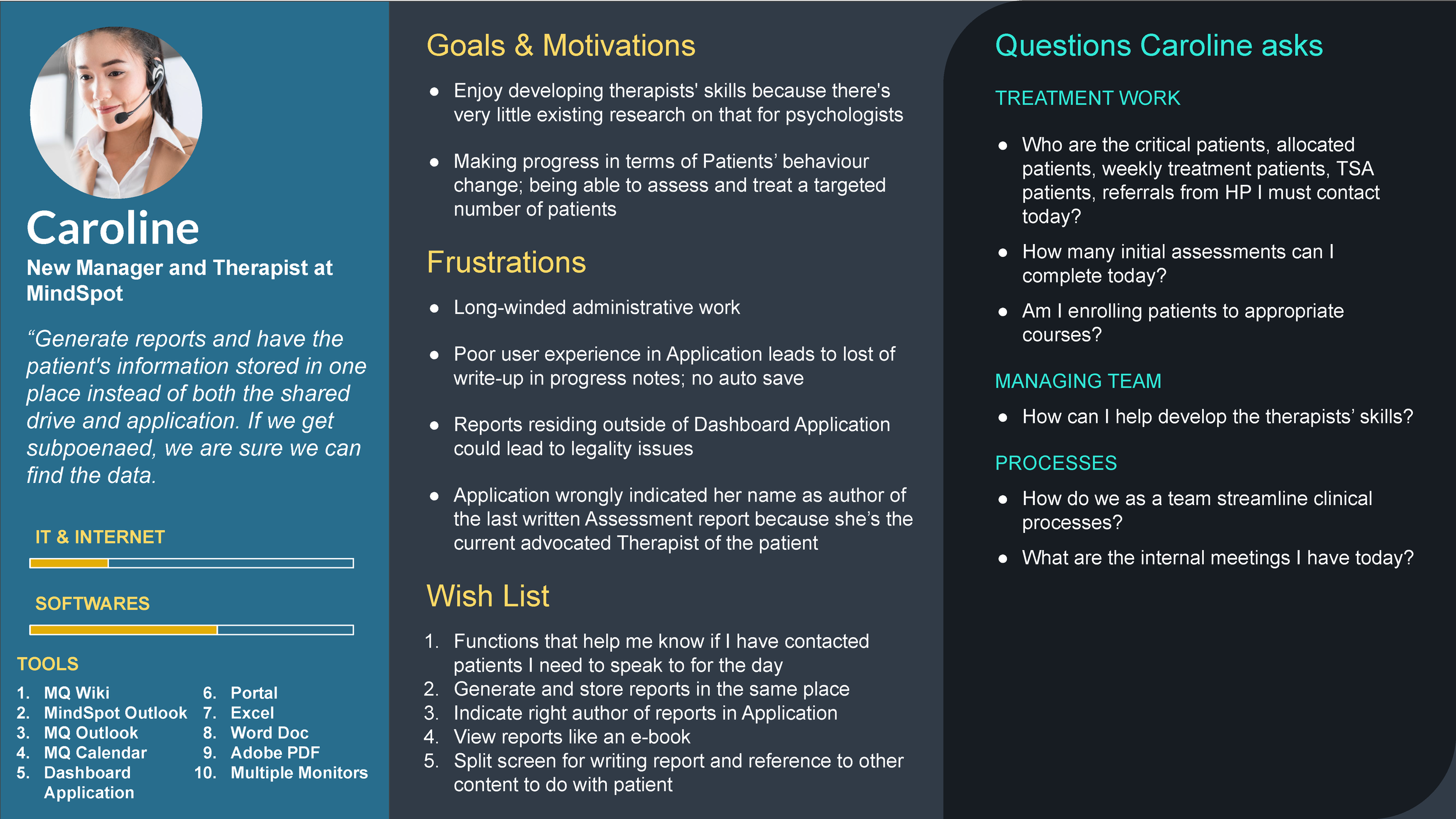
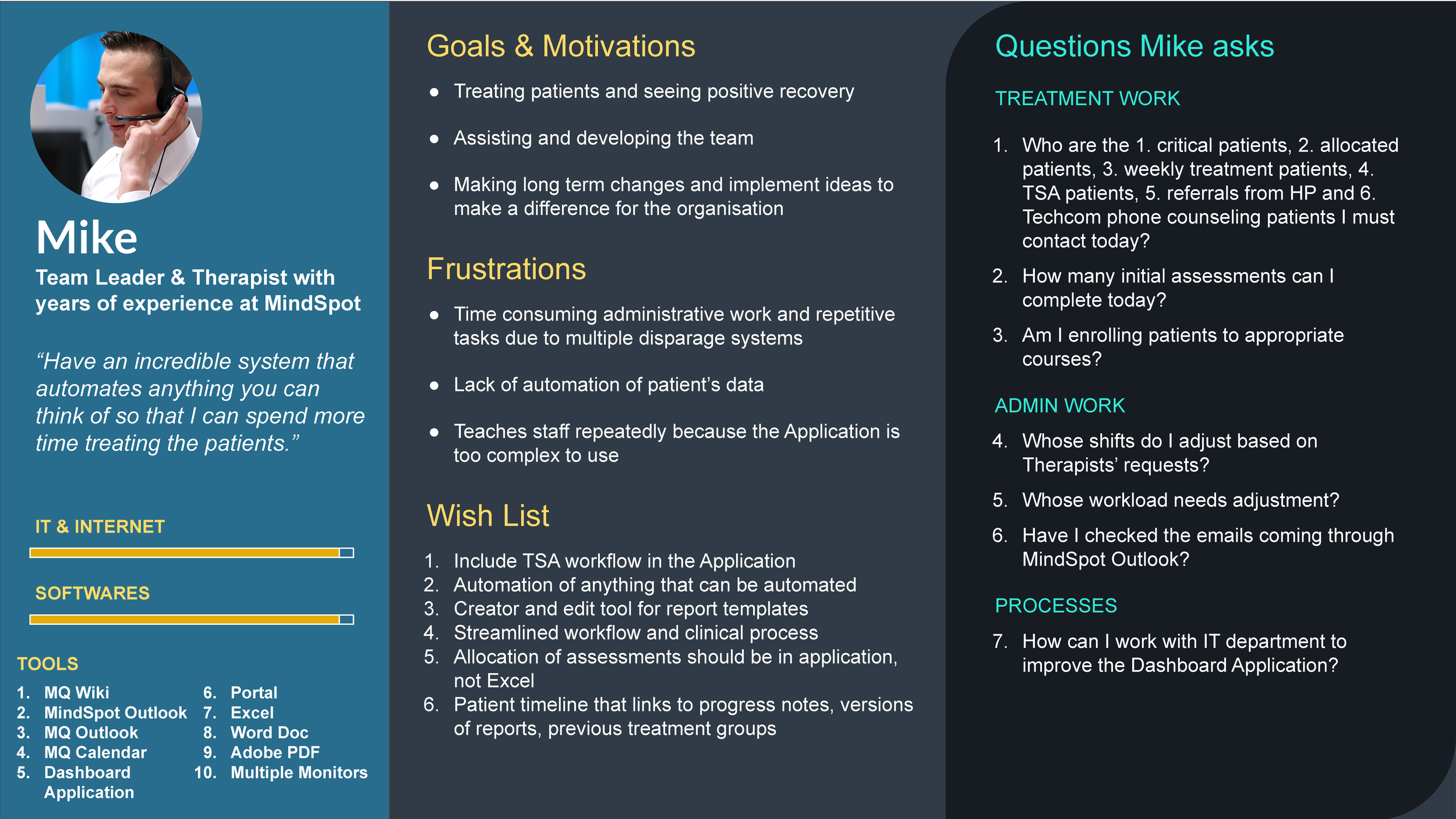
Delivering the solution
User research was carried out to reveal problems experienced by the users. Tasks analysis and customer journeys helped inform on the redesign of information architecture.
Together with the team at Constant Consulting, we recreated and managed the clinician platform, a single application to replace the multiple systems from the users’ previous workflow.
The aim was to help Therapists and Administrators manage patient status, course status, reporting and progress monitoring of patients.
Continuous integration and continuous delivery pipelines were implemented.
Recommended user journeys for various user types
Task analysis and solution for Therapists
Defining the information architecture
Flow charts were designed for the therapists and administrators.
These were utilised to gather feedback from the cross-function team and iterated to inform on the user interface designs.
Designing the user experience and interface
Low fidelity designs were drafted and feedback from the cross-function team and business stakeholders were gathered for iterations before the high fidelity designs were executed.
Frequent feedback sessions and usability tests were carred out thereafter.
One of the key user feedback to the existing platform the Therapists were using was that they regularly had to switch between browser windows or two monitors to refer to previous patient’s progress notes when writing a new one while conversing to a patient on the phone. The new design took this into account — a split screen that allows Therapists to write a new progress note on the right panel while referring to history of a patient on the left panel.
Achievements
Reduced administration effort and time for therapists by 50%, thus increasing the number of patients treated by each therapist from 1 to 4 within the next 6 months.
Decreased the average response time to patient inquiries by 40% within the next quarter.
Improved patient communication, coordination, and workflow to help over 150,000 Australians and currently serves more than 30,000 Australians in Mental health each year





